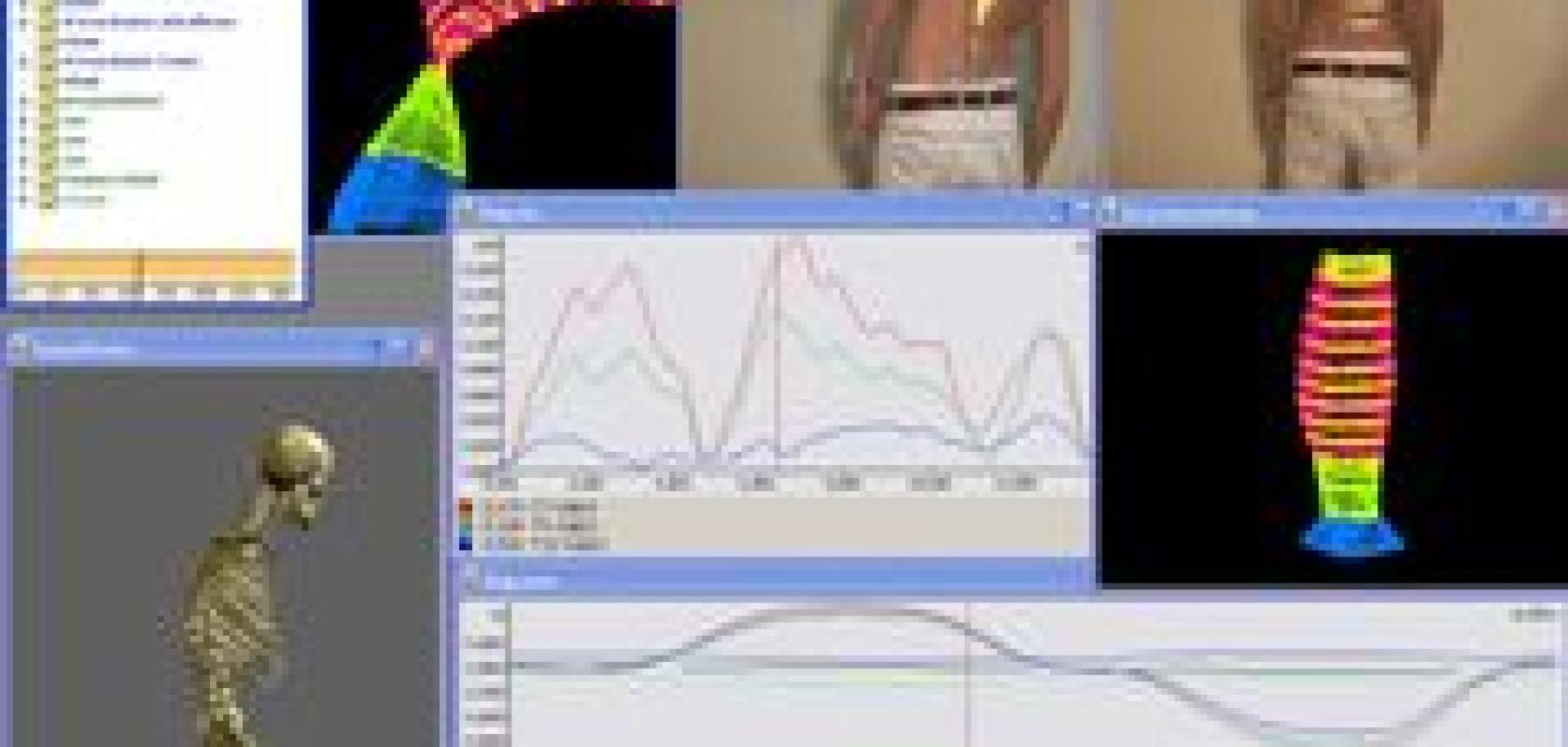A system for precisely evaluating a patient's sequence of movements has been developed as an aid for doctors and scientists researching musculoskeletal dysfunction. SIMI Motion from SIMI Reality Motion Systems of Munich, Germany is an analysis system for the dynamic, non-invasive diagnosis and monitoring of musculoskeletal dysfunction and can offer new therapies to patients, tailored to their individual needs.
The system analyses video data from one or more digital cameras and generates crucial data such as joint angles, accelerations, axle symmetries, and joint torque or stress. This can be compared with standard values in biomedical literature to identify possible dysfunctions.
The system is equipped with one (2D version) or more (3D version) Pike F-032B digital cameras from Allied Vision Technologies. The cameras are connected to an ordinary desktop computer with an IEEE 1394b FireWire or a fibre optic interface. The test subject is outfitted with markings on crucial joints and then executes a particular sequence, such as taking a few normal steps, in front of the camera. The SIMI Motion software analyses the image data from the camera and derives the joint movements from the progression of the markings.
Particularly valuable for doctors is the system's ability to synchronise with other medical measuring devices such as force plates, foot pressure measurement devices or electromyographs (EMGs). In addition, pre- and post-operative comparisons can be performed on patients, allowing for evaluation of the surgery's success, and doctors can take measurements at regular intervals to check and document the progress of rehabilitation.
The SIMI Motion system has also been applied in basic research. Dr Andrey Irintchev, director of the Neuroscientific Research Laboratory of the ENT Clinic at the University of Jena Hospital (Germany), developed a method for scientifically measuring, comparing and documenting motor disruptions and the corresponding healing processes in laboratory mice. Dysfunctions resulting from nerve or spinal cord damage, as well as possible treatment therapies, were studied.
By capturing and analysing a mouse's gait along a beam, Irintchev examined new treatment methods, such as the influence of electrical stimulation on the regeneration of nerves. 'Image rate and quality are key for the precision we need,' Irintchev said. 'For that reason, we finally decided on the Pike digital camera from Allied Vision Technologies, whose 200fps speed and high image quality allowed us to analyse mouse movements with complete exactitude.'
The SIMI Motion software analyses the images and generates benchmark data such as certain joint angles or accelerations that are then statistically evaluated. 'Thanks to our method using the SIMI software and the AVT cameras, we're able to measure very slight deviations and to statistically account for what used to be mere empirical observation with data and numbers,' Irintchev commented. 'This statistical evaluation of verifiably collected results is decisive in every discipline of scientific research, as only in this way can results be validated and conclusively proven.'


